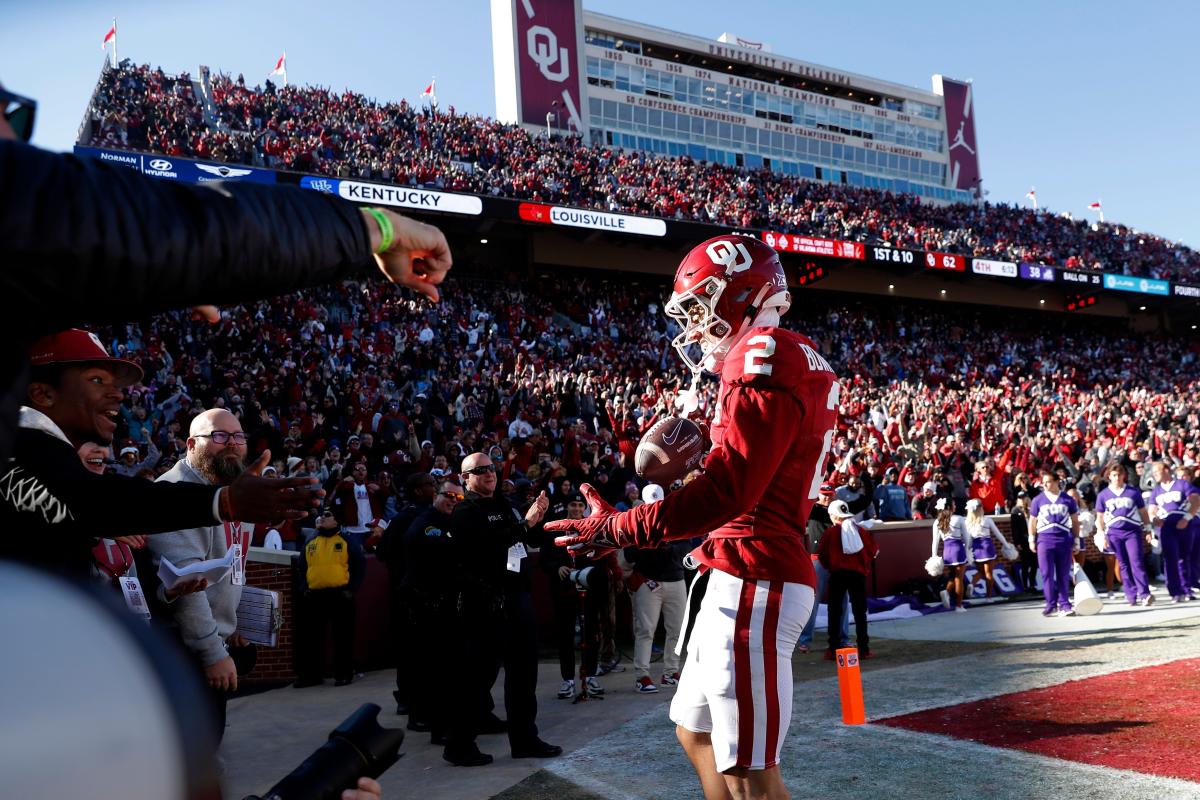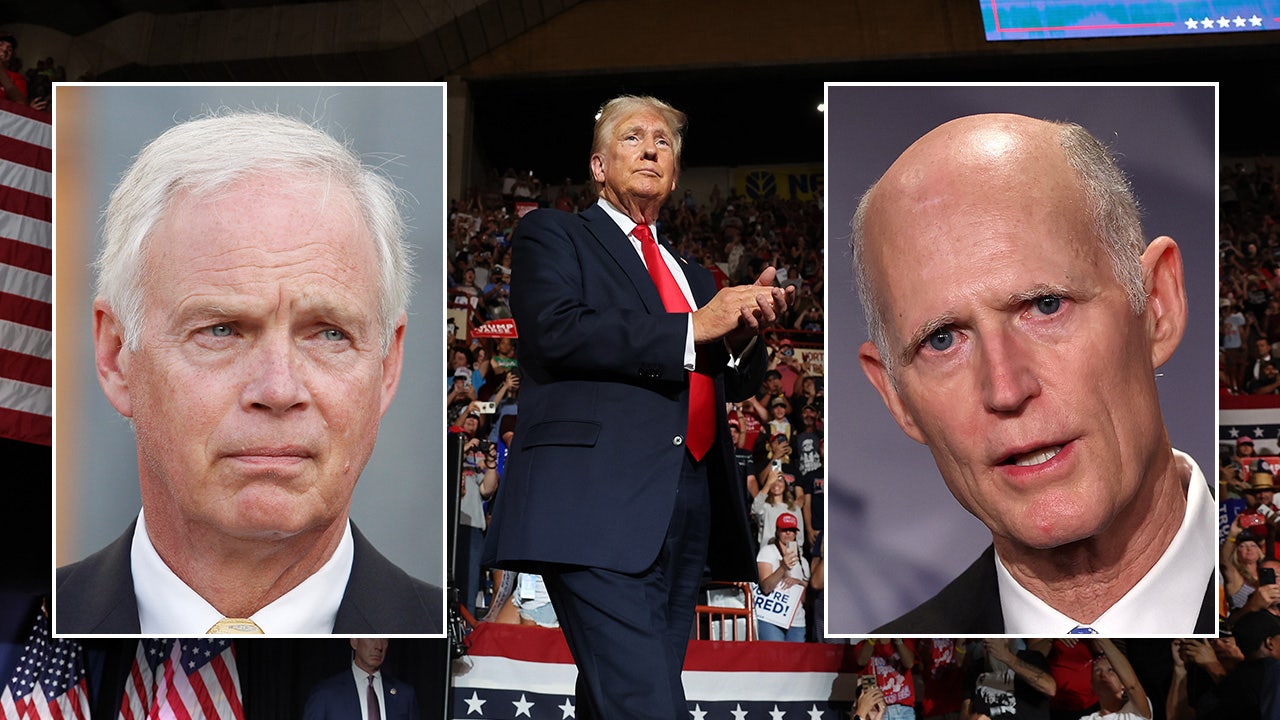Sports
Steve Kerr not expected to return as USA Basketball head coach: report
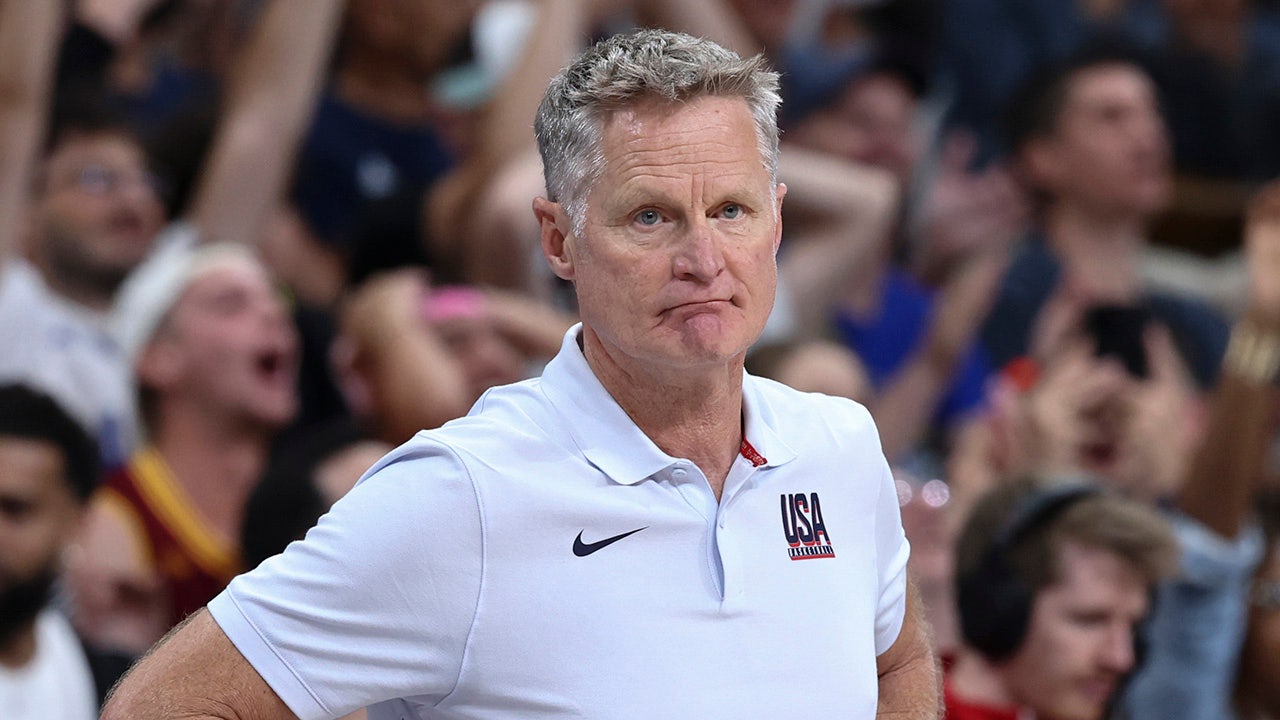
It seems one gold medal in the Olympics as head coach is all USA Basketball’s Steve Kerr wants to see, as he’s reportedly not expected to continue with the men’s team.
NBA reporter Marc Stein reports that Kerr is done leading the USA, the winners of gold in the 2024 Paris Olympics.
Stein adds that Miami Heat head coach Erik Spoelstra, or Los Angeles Clippers head coach Tyronn Lue, is expected to replace Kerr, who had both on his staff in Paris.
Head Coach Steve Kerr of the USA Basketball Men’s Team talks to the media after the game against the Canada Basketball Men’s Team on July 10, 2024 at the T-Mobile Arena in Las Vegas, Nevada. (Mercedes Oliver/NBAE via Getty Images)
Kerr has been a part of Team USA since 2016, when the Golden State Warriors head coach joined legendary San Antonio Spurs head coach Gregg Popovich’s staff for USA Basketball.
Team USA would secure gold that year and the following Olympics in Toyko in 2021. Kerr would, then, take over as head coach after Popovich stepped down following the gold-medal victory.
In 2023, Kerr’s leadership was questioned by some after finishing fourth in the 2023 FIBA World Cup.
WARRIORS’ STEVE KERR ON TRUMP ASSASSINATION ATTEMPT: ‘DEMORALIZING DAY FOR OUR COUNTRY’
But this year’s performance at the Paris Olympics saw Team USA fight back against Serbia to reach the gold medal game, where they would eventually defeat host country France in thrilling fashion.
During the 2024 Olympics, Kerr was criticized for benching players like Jayson Tatum and Joel Embiid, both players who have been featured in the NBA’s first-team All-Pro, for the entirety of some contests. He even called himself an idiot after leaving Tatum out of Team USA’s first game in Paris.
However, with a star-studded roster that included Steph Curry, LeBron James, Kevin Durant and more, Kerr had to make some tough choices along with his coaching staff to divvy out playing time based on matchups.

Steve Kerr of the Men’s National Team talks to the media during practice on July 13, 2024 in Abu Dhabi, The United Arab Emirates at tNYU Abu Dhabi. (Ryan Stetz/NBAE via Getty Images)
No matter the critiques, Team USA went 6-0 in Paris, winning the country its fifth consecutive gold medal in the Olympics.
Whoever USA Basketball chooses as Kerr’s replacement will likely be the head coach leading the squad into Los Angeles in 2028.
Spoelstra makes for an experienced candidate considering his 750-527 career record as head coach in the NBA with the Miami Heat for the past 17 seasons. He has also led his team to six NBA Finals, which includes three victories with back-to-back titles in 2012 and 2013.
Spoelstra is also of the Popovich coaching tree, which could go a long way for USA Basketball.
As for Lue, he has a slightly better career record at 312-217, having coached the Clippers and Cleveland Cavaliers. Lue’s squad, which featured James and Kyrie Irving among others, defeated Kerr and the Warriors in the legendary 2016 NBA Finals when the Cavs were down three games to one before coming back to win it all.
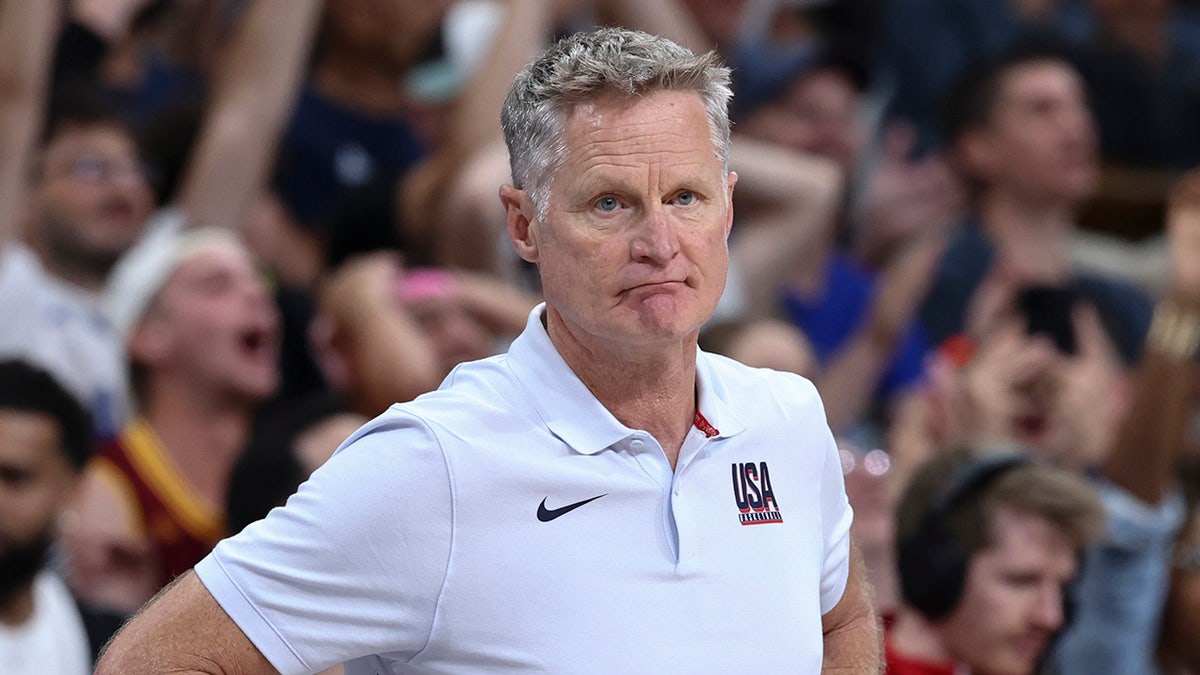
Steve Kerr Head Coach of Team USA looks on during the Men’s Group Phase – Group C match between Serbia and USA on Day 2 of the Olympic Games Paris 2024 at Stade Pierre Mauroy on July 28, 2024 in Lille, France. (Catherine Steenkeste/Getty Images)
Kerr will continue coaching the Warriors, but he will step aside to allow another coach to lead Team USA in the future.
Follow Fox News Digital’s sports coverage on X, and subscribe to the Fox News Sports Huddle newsletter.

Sports
Why the Pirates face an added temptation to shut down Paul Skenes

By Ken Rosenthal, Stephen J. Nesbitt and Zack Meisel
With playoff odds below one percent, the Pittsburgh Pirates easily could justify shutting down their electrifying ace, right-hander Paul Skenes.
This is Skenes’ first full professional season. He has thrown 125 1/3 innings between the majors and minors, nearly as many as he did a year ago between LSU and his brief debut in the Pirates’ system. By ending Skenes’ brilliant rookie campaign, team officials could cite the protection of Skenes’ long-term health and preservation of him for a potential playoff run in 2025.
They also could operate with a compelling ulterior motive — the possible prevention of Skenes from finishing first or second in the National League Rookie of the Year voting, an outcome that would deprive him of gaining a full year of service time and keep him in Pittsburgh for at least one additional season.
The Pirates currently have no such plans, according to sources briefed on their thinking. They have no set innings limit for Skenes. The only restriction they are considering, assuming Skenes stays healthy, is potentially shortening his outings. The Chicago White Sox are taking just that approach with left-hander Garrett Crochet, who is working as a starter for the first time in his professional career.
Skenes, 22, did not make his major-league debut until May 11, but could automatically earn a full year of service under a rule adopted by the league and players’ union in the 2022 collective-bargaining agreement. The rule, designed to discourage teams from manipulating the service time of top young players, rewards the top two finishers in each league’s Rookie of the Year voting, regardless of how many days they spend in the majors.
Paul Skenes leaves his MLB debut to a standing ovation! pic.twitter.com/nSGK6WAa8J
— MLB (@MLB) May 11, 2024
This is how Baltimore Orioles catcher Adley Rutschman and Cleveland Guardians right-hander Tanner Bibee, runners-up for the AL rookie award in 2022 and ‘23, respectively, received full years of service even though they did not meet the typical requirement of 172 days out of a 187-day season.
The new rule effectively puts voting members of the Baseball Writers Association of America in position to deprive a low-revenue team such as the Pirates an extra year of a superstar player — a far more consequential outcome than the individual cash bonuses that are frequently tied to the awards.
For the Pirates, the difference between keeping Skenes for five more years and six would be enormous. As a club that generally operates with a bottom-five payroll, the chances of Pittsburgh signing Skenes to a lucrative extension would be extremely low. The difference for Skenes, too, could be immense. His last year of arbitration could turn into the first year of a free-agent payday, and he would become eligible for the open market after his age-27 season rather than a year later. By continuing his ascent as a generational talent, he would be in position for a historic contract.
Skenes started the All-Star Game two months into his major-league career. He might finish first or second for NL Rookie of the Year even if he does not throw another pitch this season. But the pack chasing him is closing.
Jackson Merrill leads all rookies in hits, RBIs and fWAR. (Dustin Bradford / Getty Images)
San Diego Padres center fielder Jackson Merrill has emerged as a front-runner. Milwaukee Brewers outfielder Jackson Chourio since June 1 has an OPS of nearly .900. San Francisco Giants shortstop Tyler Fitzgerald could produce a 20-homer, 20-stolen base season in fewer than 100 games. Then there’s Chicago Cubs lefty Shota Imanaga, who trails Skenes in ERA (3.11 to 2.30) but will finish with considerably more volume, especially if the Pirates elect to aggressively manage Skenes’ innings.
Thus, the temptation for the Pirates to shut down Skenes — and effectively damage his Rookie of the Year chances — is not insignificant. A sixth consecutive losing season would sting even more if the Pirates also lost a year of club control over their young ace. Even worse for the Pirates, under another rule adopted in the 2022 CBA, the Prospect Promotion Incentive (PPI), the team would not even receive a draft pick if Skenes won Rookie of the Year.
For a team to secure the pick, it must include a consensus top-100 prospect on its Opening Day roster or promote him within the first two weeks, then benefit from the player either winning Rookie or the Year or finishing top three in the MVP or Cy Young Award voting. Three clubs have realized that incentive — the Seattle Mariners with center fielder Julio Rodríguez, the Orioles with shortstop Gunnar Henderson and the Arizona Diamondbacks with outfielder Corbin Carroll.
The stakes for this year’s candidates differ according to circumstances. Merrill could fetch the Padres a PPI pick. Fitzgerald cannot get one for the Giants or earn a full year of service. Chourio and Imanaga signed long-term deals before their debuts, rendering their clubs ineligible for PPI selections.
The incentive, another way of discouraging clubs from engaging in service-time manipulation, was drawn up with prospects like Skenes in mind. But the Pirates called up Skenes too late for him to become eligible. They believed a slow ramp-up would be in his best interests. They also knew, at least for the possibility of securing an extra pick, it might compromise their own.
The risks for teams carrying Rodríguez, Henderson and Carroll on Opening Day rosters were relatively minimal. All three spent at least two seasons in the minors, becoming fixtures in their organizations. And, as position players, the concerns about their workloads were less pronounced than they were for pitchers.
Skenes, as something of a unicorn, complicated the equation.
The Pirates chose him with the first pick of the 2023 draft. They allowed him to throw a combined 6 2/3 innings at three minor-league levels coming off his 122 2/3 innings at LSU. They monitored his work during the offseason, some of which took place at their spring training facility in Bradenton, Fla.
Spring training 2024, however, was Skenes’ first as a professional, and the first for the Pirates’ major-league staff around him. The Pirates opted for a deliberate approach, wanting to learn more about his body, his delivery, his pitching. They also wanted to avoid building him up too quickly, knowing they almost certainly would want him in the majors during the season. With a traditional starter’s buildup, Skenes would have been on a path toward blowing past his 2023 innings total too quickly.
So, Skenes threw all of three innings in major-league exhibitions. His rookie teammate, right-hander Jared Jones, threw 16 1/3. The Pirates knew Skenes would not be ready to carry a full starter’s workload by Opening Day. That was never their plan.
Once the first two weeks of the season passed, the potential for the Pirates to earn a draft pick if Skenes won Rookie of the Year disappeared. Skenes, though, was still in position to gain a full year of service if he finished first or second in the voting. By early May, he had a 0.99 ERA and a 43 percent strikeout rate in seven Triple-A starts. It was time.
Skenes’ major-league performance — a 2.30 ERA and 32 percent strikeout rate — vindicated the timing of his promotion. To ruin his chances of a top-two Rookie of the Year finish, the Pirates probably would have needed to keep him in the minors until at least late June. Which would have been a disservice not only to Skenes, but also to the team and the sport.
By not waiting longer, the Pirates cost themselves in another way as well. Skenes almost certainly will earn Super Two status and qualify for an extra year of arbitration. But in the end, they had little choice. Skenes was too good to hold down. And the team, to be sure, derived certain benefits, too.
Much as Rutschman did with the Orioles in 2022, Skenes elevated the franchise, improving the perception of the Pirates both among their fans and within the sport.

Paul Skenes’ presence has energized Pirates fans since his May 11 debut. (Justin Berl / Getty Images)
Yet under the new rules, the Pirates are the baseball equivalent of “a keg tapped at both ends,” the description Ben Franklin once used for New Jersey, referring to New York in the north and Philadelphia in the south. The team will not get a draft pick for Skenes because of the care it took with him at the start of the season, and could end up with one fewer year of club control because of a vote at the end.
“I’m supportive of the rules changes that came about in the last CBA that were intended to get the best players to the major leagues,” Pirates general manager Ben Cherington said. “And of course I’m confident the league and Players Association will continue to review those going forward and work to do what is in the best interests of the game.”
Tanner Bibee can relate to Skenes’ situation. He wasn’t even in big-league camp for spring training in 2023, so he wasn’t a contender for the Guardians’ Opening Day roster. Cleveland, however, grew so desperate for starting pitching help at the end of April that it turned to him sooner than planned.
Bibee, then 24, wound up being the most productive rookie pitcher in the American League, finishing last season with a 2.98 ERA. The Guardians leaned on him and fellow rookie starters Gavin Williams and Logan Allen, but were cautious with all three, shutting down each in mid-September. With Bibee, the club cited a tweaked hip.
“Had Tanner not suffered the hip injury in September last year, he would have continued to pitch,” Guardians president of baseball operations Chris Antonetti said. “Once the hip issue crept up, we didn’t think it made sense for Tanner to try to pitch through it and risk a more significant injury. We felt the right thing for his health and longevity of his career was to shut him down at that point.”
Bibee, though, would have preferred to pitch through the problem and attempt to strengthen his résumé in the Rookie of the Year race. Henderson was the runaway favorite to win the award, but Bibee knew he had a compelling case to finish second, ahead of Boston Red Sox first baseman Triston Casas and Texas Rangers third baseman Josh Jung.
Of that group, Bibee was the only one in the service-time predicament. Henderson, Casas and Jung had debuted the year before and started the 2023 season on their teams’ respective Opening Day rosters, so they were eligible to earn a full year of service no matter the voting results.
The setup, as the Bibee and Skenes examples demonstrate, potentially puts the player and his team at odds. Everyone benefits short-term from a pitcher’s peak performance, but the club can benefit significantly in the long run if the player fails to make headway with the voters. The 2023 Guardians fell out of postseason contention by the time they shut down their rookie pitchers, so there wasn’t much for the team to gain.
When asked last September if he was rooting against Bibee in the Rookie of the Year race, Antonetti said: “We always want our players to do as well as they possibly can.” Bibee admitted he was well aware of the stakes and suggested it would give him a chip on the shoulder if he finished outside the top two.
Not to worry. Bibee finished second and earned the full year of service time, pushing him one step closer to arbitration and to free agency for one of the league’s most financially stingy outfits.
No one is more deserving.
Tanner Bibee finished second for American League Rookie of the Year following a debut season that was nothing short of incredible. The future is so bright.#ForTheLand pic.twitter.com/85hSVN7hZg
— Cleveland Guardians (@CleGuardians) November 13, 2023
Righty Eury Pérez endured similar treatment in Miami last summer, when the Marlins optioned him to the minors for a month in July. He had compiled a 2.34 ERA in 14 starts, and then the Marlins sent him on a midseason vacation to manage his workload. The difference was that Pérez had thrown only 77 innings in the minors the year before. He finished seventh in the NL rookie voting — and despite the Marlins’ efforts to keep him healthy, underwent Tommy John surgery in April.
Could a player and his representatives file a grievance with the union over such an issue? One starting pitcher, granted anonymity so he could speak freely on the matter, was skeptical a player would win. The CBA does not prohibit a team’s meticulous management of a pitcher’s innings.
“Those guys are pretty good at coming up with good reasons,” said the pitcher, referring to front-office executives.
The voting members of the BBWAA are another constituency grappling with the evolution of their responsibilities under the new rules.
Two writers from each AL or NL city vote on the MVP, Cy Young, Rookie and Manager of the Year awards. The BBWAA expressed concern to the league about Rookie of the Year votes being linked to service time, but ultimately decided the matter was not egregious when 30 voters would determine whether a player gains the full year.
Player contracts long have included bonuses tied to awards votes. The league, however, does not allow a single vote to trigger such incentives, removing the possibility that one compromised voter might do a player a favor, and possibly receive one in return.
The adjustment in the league’s policy stems from a matter in 2017 when the Chicago Cubs changed the language in right-hander Tyler Chatwood’s free-agent contract after the BBWAA lodged a complaint about an escalator clause in his three-year, $38 million deal. The clause would have awarded Chatwood an automatic $2 million salary boost if he received one vote for the NL Cy Young Award in 2018, and a $4 million raise in 2020 if he received one in both 2018 and ‘19.
An example of adjusted language in today’s contracts occurred in the five-year, $145 million extension left-hander Chris Sale signed with the Red Sox in March 2019. The deal included an option that would vest with a top-10 Cy Young Award finish, but only if Sale finished in the top 10 with more than one vote. (Sale’s current two-year, $38 million deal with the Braves replaced the final guaranteed year and option year in that deal).

Chris Sale finished no lower than sixth in the AL Cy Young Award voting in every season from 2012-18. (John Fisher / Getty Images)
Major League Baseball is not the only professional sport in which awards votes carry financial implications. The NBA’s annual awards are determined by a panel of 99 sports writers and broadcasters. All-NBA selections and either MVP or Defensive Player of the Year awards can make players with between four and six years of experience eligible for a maximum salary starting at 30 percent of the salary cap. Under certain conditions, those same honors can earn players with between seven and nine years of experience a boost from 30 percent of the cap to 35 percent.
“The BBWAA is proud of its awards, and we’re glad that the league and players find them meaningful,” said BBWAA president Chad Jennings, who is a writer for The Athletic. “We are completely transparent with our awards votes, every single one, because we feel history and fans deserve that. Our responsibility is to assure the integrity of the awards, and we are vigilant in that mission. It’s why we work to prevent single-ballot clauses in contracts and maintain a dialogue with the players and the league when there is a concern.”
Regarding service time, Skenes represents the next pivotal vote. And his availability the rest of the season could influence how that vote turns out.
Asked Aug. 2 about the Pirates potentially lowering pitch counts or giving him more rest between starts, Skenes said, “What they’re thinking and what I’m thinking is pretty well aligned.”
Is there a hard cap on his innings?
“I don’t know exactly what it is,” Skenes said with a shrug, “but probably.”
Later that day, Cherington said the Pirates had set no such limit for Skenes.
“Trying to nail a specific innings total, I’m certainly not smart enough for that to be anything more than arbitrary,” Cherington said. “What’s going to guide us much more is: What’s happening in games? What’s happening between games? When and if we feel — and we may — like there’s a time when this is going to help this pitcher and this team stay stronger for the totality of the next two months — by backing off a pitch count one time or giving him an extra day, whatever combination of levers it is — then we’ll do the best we can to do that.
“We’re not going to stop competing. If anybody, position player or pitcher, is in a position where there’s no clear risk to competing, well, then I’m not sure it’s up to me to play God and say he shouldn’t be competing.”
The idea of shutting down Skenes was a lot less appealing back then, when the Pirates were 2 1/2 games out of a playoff spot. The team since has lost 12 of 15 games, all but falling out of contention. Decisions loom regarding Skenes’ usage down the stretch. And the temptation for the Pirates to shut him down involves more than just his health.
(Photo: Chris Coduto / Getty Images)
Sports
Freddie Freeman has hairline fracture, but he won't miss games for Dodgers

For much of the summer, putting together a daily lineup was a tiresome exercise for Dodgers manager Dave Roberts, toiling to piece together a patchwork roster plagued by injuries.
On Monday afternoon, however, the Dodgers skipper almost smiled when asked about that night’s batting order.
“On the position player side,” he said, “this, since opening day, is as healthy as we’ve been.”
Indeed, in a visual reminder of the Dodgers’ offensive potential when at full strength, the team fielded its best lineup in weeks — maybe months — for its series opener against the Seattle Mariners at Dodger Stadium.
Freddie Freeman followed leadoff hitters Shohei Ohtani and Mookie Betts in the third spot, having avoided the injured list despite being diagnosed with a hairline fracture in his right middle finger earlier Monday.
Max Muncy and Tommy Edman were activated from the injured list, resupplying the Dodgers with their opening-day third baseman (Muncy had been out since May 15 because of an oblique strain and rib injury) and marquee trade deadline acquisition (Edman had yet to play this season, for the Dodgers or St. Louis Cardinals, because of offseason wrist surgery and a sprained ankle).
Even the one player who went on the IL — backup catcher Austin Barnes, who suffered a toe fracture after fouling a ball off his foot Sunday — is expected to miss the minimum 10 days, Roberts said.
“It seemed like everyone was pretty excited today, getting a couple pieces back,” Muncy said. “Definitely a little pep in the step for everybody, so hopefully we can just carry that onto the field and we can get everyone going at the right time right now.”
Freeman’s presence in the lineup was the biggest sigh of relief.
After exiting Saturday’s game in the eighth inning with a jammed right middle finger, then missing Sunday’s game because of continued swelling, the veteran first baseman got a CT scan on Monday that showed a hairline fracture.
However, an injured list stint was never much of a consideration, Roberts said, not after Freeman tested his still-bandaged finger in pregame drills and told the team he could tolerate the lingering pain.
“We talked about it briefly, but he was adamant that he was gonna be fine,” Roberts said of Freeman. “He’s a guy that you certainly trust.”
Muncy’s availability also marked a long-awaited return.
For the last three months, the veteran third baseman had endured a series of stops and starts in his recovery from an oblique injury, with continued discomfort derailing a recovery that was initially expected to take only a matter of days.
The problem, Muncy explained Monday, was that in addition to his oblique strain, doctors discovered that he had “a bottom rib that was out of place that was causing a lot of damage.”
Austin Barnes puts down a bunt during a game against the Miami Marlins on Aug. 19, 2023.
(Ryan Sun / Associated Press)
“We don’t know,” Muncy said when asked how the rib initially got hurt. “My best guess is maybe the week leading up to when I got hurt, I dove for a ball or something and landed on it wrong, and we just didn’t know it at the time. The day that I got hurt, I already had some bruising down there.”
The issue was finally fixed when Muncy got a “chiropractic adjustment” last month, as Roberts put it then, that repositioned his rib and soon relieved all pain.
What exactly did doctors do?
“I’d re-show you, but I can’t actually physically get my body in that position,” Muncy joked. “It kind of felt like they almost broke my rib. They didn’t, but it almost felt like that’s what happened. It’s one of those things where it hurt in the moment but there was a ton of relief almost immediately. The next day I got an injection and that helped a ton. A day or two after that, it felt like I was never even hurt.”
Edman’s recovery from offseason wrist surgery went even slower, getting pushed back earlier this summer by a sprained ankle he suffered while still with the St. Louis Cardinals.
Yet after completing a minor-league rehab assignment alongside Muncy last week, the utilityman is finally ready for both his season and Dodgers debut.
“When you have Tommy Edman hitting ninth, Miguel Rojas and what he’s done for us hitting eighth, Max Muncy at seventh, you’ve got some length in your lineup,” Roberts said.
To make all the pieces fit, the Dodgers designated shortstop Nick Ahmed for assignment and optioned slumping rookie center fielder Andy Pages back to the minors. They also recalled Hunter Feduccia to be a short-term replacement for Barnes.
More help could be on the way soon, with Chris Taylor likely to be activated “within the week,” Roberts said. Taylor will play a couple rehab games with single-A Rancho Cucamonga first.
On the pitching side, reliever Blake Treinen (hip) is expected to be activated on Tuesday. Starter Yoshinobu Yamamoto (shoulder) and reliever Brusdar Graterol (hamstring) continue to throw bullpen sessions. Roberts also reiterated his belief that staff ace Tyler Glasnow (elbow tendinitis) is looking at a “short stint” on the injured list.
To be competitive long term this season, the Dodgers will likely need most, if not all, of those pitchers back before the end of the season.
For Monday night, though, a mostly full-strength lineup was enough for Roberts to crack a grin.
“We’re still trying to get some pitchers to health,” Roberts said. “But as far as offensively, I like the guys we have.”
Sports
WNBA playoff projections: Will Caitlin Clark and the Indiana Fever make the cut?

The WNBA is already full speed ahead into the second half of the season, and it is going to be a sprint to the finish. Regular-season action ends in exactly one month, with each team packing 12-14 games in the final stretch.
As players re-acclimate to following the Olympic break and make one last push for the postseason, here is a look at which teams I project will make the playoffs as well as a to-do list for each team to focus on to be in the best possible position come playoff time.
Playoff-bound
1. New York Liberty
Stay the course
The Liberty remind me of the Aces at this point last season. New York is the best team in the league, and a couple of bad games or a bad week won’t change that, just as an August swoon for Las Vegas didn’t prevent the Aces from repeating as champs. It will be interesting to see if the Liberty choose to chase the single-season wins record of 34, set by the Aces last year. New York can also tie the best winning percentage of all-time — the Houston Comets won 90 percent of their games in 1998 — by winning out, but that might be a Pyrrhic victory if the Liberty tire themselves out and don’t cap off the season with a ring. Just ask the 2016 Golden State Warriors.
The bag was DEEP and the Libs closed the West Coast tour out the right way 💪 #LIGHTITUPNYL pic.twitter.com/raBUvOswFb
— New York Liberty (@nyliberty) August 18, 2024
2. Minnesota Lynx
Inject a little variety
The Lynx are loaded with jump shooters, but they don’t put a ton of pressure on the rim, as they’re last in points in the paint and free-throw rate. That makes them too reliant on the 3-point shot for a long series, even when they have four rotation players (Kayla McBride, Alanna Smith, Bridget Carleton and Cecilia Zandalasini) shooting better than 40 percent from the field. When they shoot below 35.5 percent from 3-point range (league average is 33.8), they’re 5-5. Once defenses lock in on taking away the 3-point line — the Liberty, in particular, seem well-suited to switch everything against them — it’s unclear how the Lynx will generate consistent offense.
3. Connecticut Sun
Diversify the offensive attack
The Sun are essentially the inverse of the Lynx in terms of their offensive profile. They know what they have in the big three of Alyssa Thomas, Bri Jones and DeWanna Bonner. But that trio hasn’t been able to get Connecticut over the hump in the postseason, so the rest of this regular season should serve as reconnaissance for the Sun — they need to figure out which perimeter player, or which perimeter actions, can take over when defenses home in on the frontcourt. Connecticut has leaned into two-player actions with the newly-acquired Marina Mabrey and Thomas, but against the Atlanta Dream defense, which sinks into the paint, the Sun’s spacing still wasn’t good enough. Connecticut needs to create more options in the half court, including increasing its 3-point attempt rate. Currently, 21.2 percent of the Sun’s points come from beyond the arc, which isn’t enough against high-powered offensive teams like the Aces and the Liberty.
4. Las Vegas Aces
Give the stars some rest
The Aces have the bones of the team that won last year’s title, but they haven’t been able to put together that formula consistently. It’s hard to believe that team isn’t still there, especially after watching A’ja Wilson, Kelsey Plum and Jackie Young have such strong showings at the Paris Olympics. The problem is that the Aces have a big hill to climb in the standings, and their players have endured heavy minutes this year, not to mention the extra burden of multiple investigations into the organization. They may not have the gas to make it through an entire playoff run if they maintain the same minutes load. As a result, even though it’s anathema to their stars, as Becky Hammon indicated on The Athletic’s “Women’s Basketball Show” earlier this year, they’ll likely have to participate in some measure of load management. Young already looks worn down after returning from Paris, and she’s arguably Las Vegas’ second-most important player. Even if it hurts them in the standings, the Aces have to take the long view.
W secured 📽️📊
Wilson: 34 PTS / 13 REB / 5 STL / 2 BLK / 60% FG
Plum: 18 PTS / 4 3PM / 46% FG
Hayes: 11 PTS / 3 REB / 50% FG
Young: 10 PTS / 4 REB / 4 AST / 2 STL / 2 3PM#ALLINLV pic.twitter.com/qA5z1t19Qs— Las Vegas Aces (@LVAces) August 19, 2024
5. Seattle Storm
Get Jewell Loyd out of her slump
The Storm’s 3-point shooting has been atrocious in 2024, with a league-worst 29.3 percent from long range. Seattle isn’t exactly bursting with snipers, but when the player who is taking more than a quarter of the team’s 3-point attempts is shooting 26 percent from distance, that’s a problem. The theory was that Jewell Loyd’s shooting percentages would improve with a lighter offensive load given the arrival of Skylar Diggins-Smith and Nneka Ogwumike, but that hasn’t been the case. Nothing looks wrong with Loyd’s form, and she’s still making more than 87 percent of her free throws, so it seems like a matter of time until the worm turns, but the Storm’s offense can’t survive without Loyd becoming more efficient.
6. Indiana Fever
Be more disciplined defensively
The Fever have several defensive concerns, as is to be expected for a team that is second-to-last in defensive rating. Many of those problems have been mitigated by their rip-roaring offense in recent games, but the main issue is how often they send opposing teams to the foul line. It would be easier to forgive opponents’ high free-throw rate if Indiana forced a lot of turnovers — those free throws would simply be a casualty of Indiana’s aggression. However, the Fever rank last in opponent turnover percentage and 11th in defensive free-throw rate. They can afford to be less handsy because they’re not taking the ball anyway; furthermore, per PBP stats, they score 6.7 more points per 100 possessions off of made field goals than made free throws.
GO DEEPER
Why Caitlin Clark’s Olympics omission might be blessing in disguise for her rookie season
7. Phoenix Mercury
Rebound
Some teams prioritize the defensive glass, others the offensive glass. With the Mercury, corralling boards is a struggle on both ends. They rank 11th in both offensive rebounding percentage and defensive rebounding percentage. Some of this is structural, as Phoenix generally plays a bevy of wings and only one true frontcourt player, whether that’s Brittney Griner or Natasha Mack. The Mercury have gotten even smaller with the injury to Rebecca Allen, which has further compromised their possession disadvantage — the opposing team took 14 more field-goal attempts in each of their first two games of the second half. The roster won’t change meaningfully from now until the end of the season; at this point, Phoenix has to commit to boxing out better.
8. Atlanta Dream
Play more optimal lineup combinations
The Dream had a relatively disastrous first half, especially since they gave up control of their 2025 first-round pick in the Allisha Gray trade — that deal was the right move for Atlanta in the long run, but it does negate the value of tanking ahead of what could be a game-changing draft. That’s why the Dream have to maximize their present and make a run at the playoffs despite losing eight straight heading into the Olympic break.
Fortunately for the Dream, Atlanta is finally healthy enough to maximize its roster. Even after winning two in a row, the Dream sit last in the league in offensive rating at 94.8 points per 100 possessions, which would be the worst mark in the WNBA since 2021. The five players who have a positive on-off differential on offense are Gray, Tina Charles, Naz Hillmon, Rhyne Howard and Jordin Canada, but they were never available at the same time during the first half. They are now, and Tanisha Wright has started that group in the last two contests, leading to two big wins over Seattle and Connecticut. That’s a unit that complements each other’s skill sets with rim pressure, shooting and perimeter and interior defense, and Atlanta needs to maximize their minutes going forward.
JC didn’t come to play! 🔥 #atlantadream pic.twitter.com/7vjakGTrfM
— Atlanta Dream (@AtlantaDream) August 19, 2024
Chasing the post-season
9. Chicago Sky
Unleash Dana Evans
The Sky have five players under contract next season, two of whom figure to be part of the future core in Angel Reese and Kamilla Cardoso. Dana Evans will be a restricted free agent, so Chicago can keep her around on a long-term contract if she shows compatibility with the frontcourt duo. Thus far, Lindsay Allen and Chennedy Carter have been far better perimeter complements, but this is Evans’ chance to make her case to stick around. Even if it doesn’t go well, losing isn’t the worst-case scenario for the Sky, which could still land in the lottery if they and the Wings both miss the playoffs.
10. Dallas Wings
Clean up turnovers
At some point, we’ll stop talking about the hole at Dallas’ point guard position. Today is not that day. The Wings had their first-choice starting five available against Connecticut to kick off the second half of the season, and all that led to was 21 turnovers, even worse than their league-leading mark of 16.6 per game. Sevgi Uzun hasn’t been the answer at point guard; 19.4 percent of her possessions result in a turnover, which ranks 135th among all WNBA players. Last year’s three-headed point guard attack of Crystal Dangerfield, Veronica Burton and Odyssey Sims is all on other teams, leaving Uzun and rookie Jacy Sheldon (who really isn’t a natural lead guard) to handle those duties, and struggles have been clear.
In fairness to those rookies, post-ups naturally lead to more turnovers, and Dallas (arguably the biggest team in the league) ranks second in post-ups per game. Nevertheless, many of the Wings’ errors are unforced, potentially a result of their mishmash of players not being on the same page. Perhaps better health will lead to more cohesion because Dallas needs to take care of its possessions to get back into the playoff picture.
11. Los Angeles Sparks
Turn the Paige
Unfortunately for long-suffering Sparks fans who have witnessed their team make three consecutive trips to the lottery, a fourth is in the best long-term interest of the franchise, especially after rookie Cameron Brink tore her ACL in June. L.A. doesn’t have the talent to compete in the playoffs, and it doesn’t make sense to chase the eighth seed for a two-game sweep, especially when the Sparks control their first-round pick this year but not in 2026. Ideally, L.A. features its young players as much as possible and sees what Rickea Jackson, Rae Burrell, Zia Cooke and Li Yueru are capable of before the 2025 offseason, when the Sparks will have to build a roster that can contend. Falling to the bottom of the standings (L.A. is currently two games “ahead” of Washington for the worst record over two years) will enable the Sparks to have the best possible lottery odds for the Paige Bueckers draft. She’s the perfect perimeter complement to their rookie frontcourt of Brink and Jackson.

GO DEEPER
Paige Bueckers aims to make this her final season at UConn … and to go out with a bang
12. Washington Mystics
Re-establish Shakira Austin
After an all-rookie campaign in 2022 that culminated in a spot on the Team USA FIBA World Cup roster, Austin hasn’t been healthy enough to recreate that level of play for consistent stretches. Now that she’s back for the Mystics, this is their chance to reacclimate Austin to WNBA play while seeing how she fits next to Aaliyah Edwards. Washington will likely have at least one, if not two, lottery picks in the upcoming draft, and the front office needs to figure out if the franchise needs another frontcourt piece, or if Austin and Edwards can be the fulcrums going forward. The good news for the Mystics is that they have competent guard play in Julie Vanloo and Brittney Sykes, so they can adequately evaluate their frontcourt in that context.
(Photo of Kelsey Mitchell and Caitlin Clark: Justin Casterline / Getty Images)
-

 Ohio6 days ago
Ohio6 days agoOhio taxpayers sent families $966 million for private school tuition: Capitol Letter
-
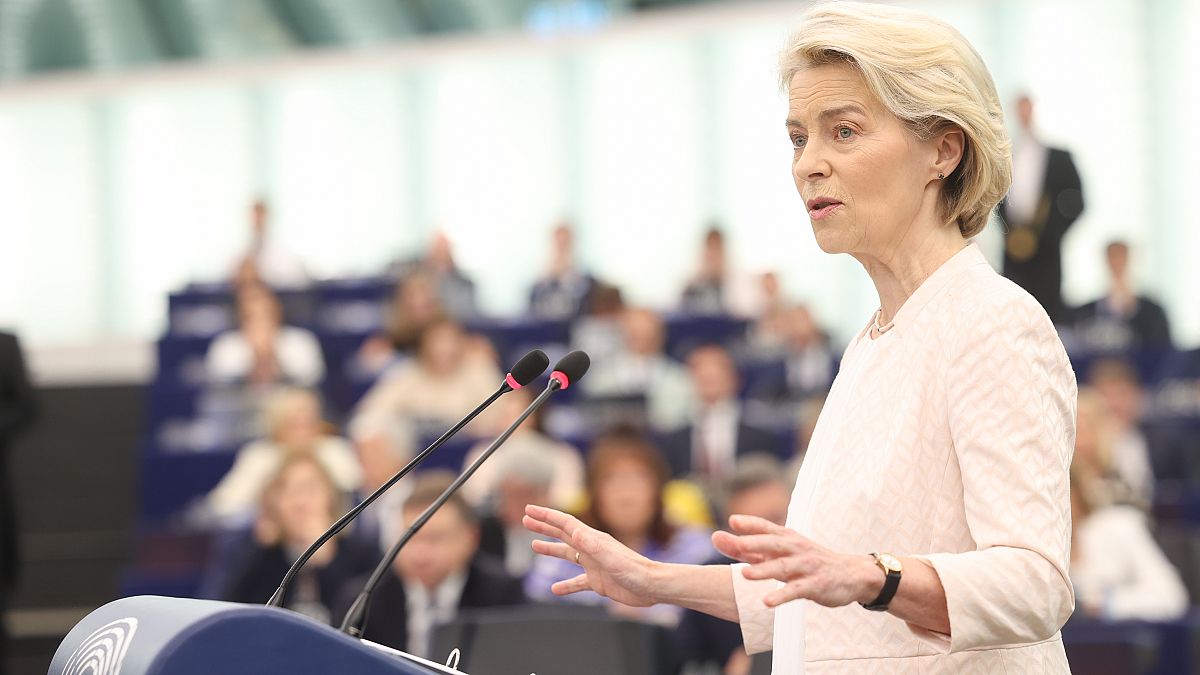
 World7 days ago
World7 days agoWhat could an EU Commissioner do to tackle the housing crisis?
-
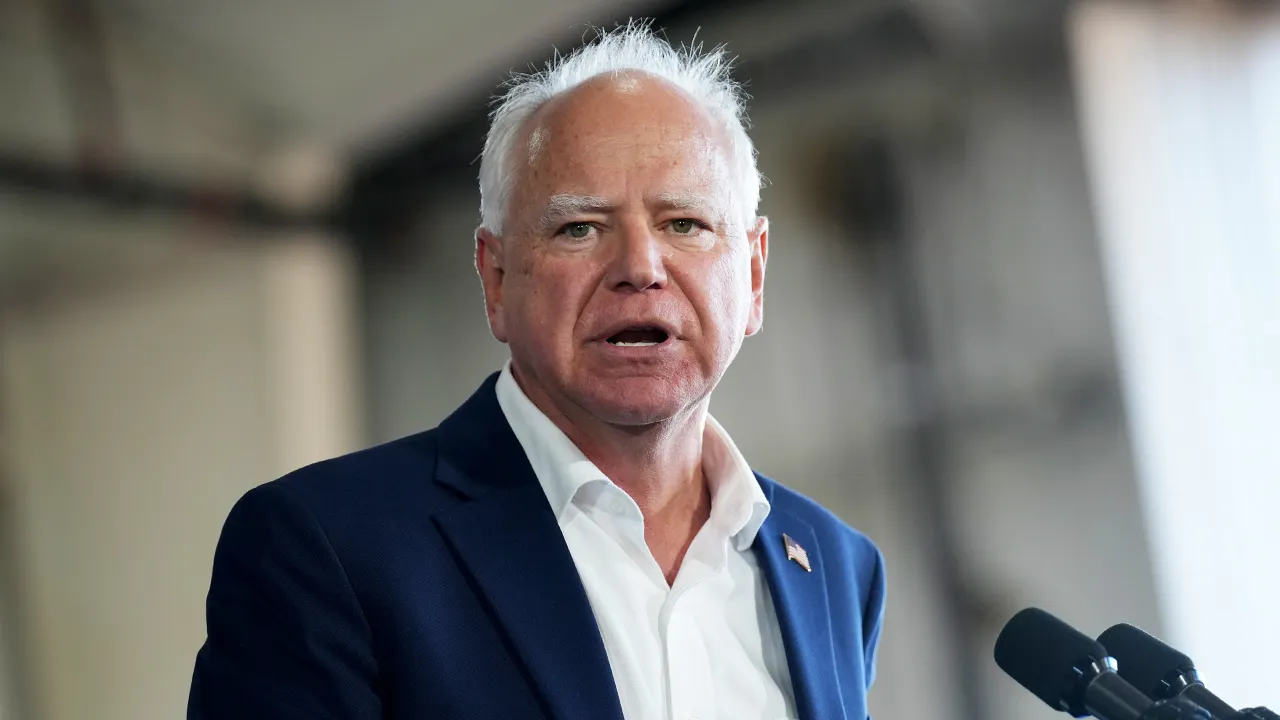
 Politics1 week ago
Politics1 week agoTim Walz 'misspoke' about using weapons ‘in war,' Harris campaign says: report
-
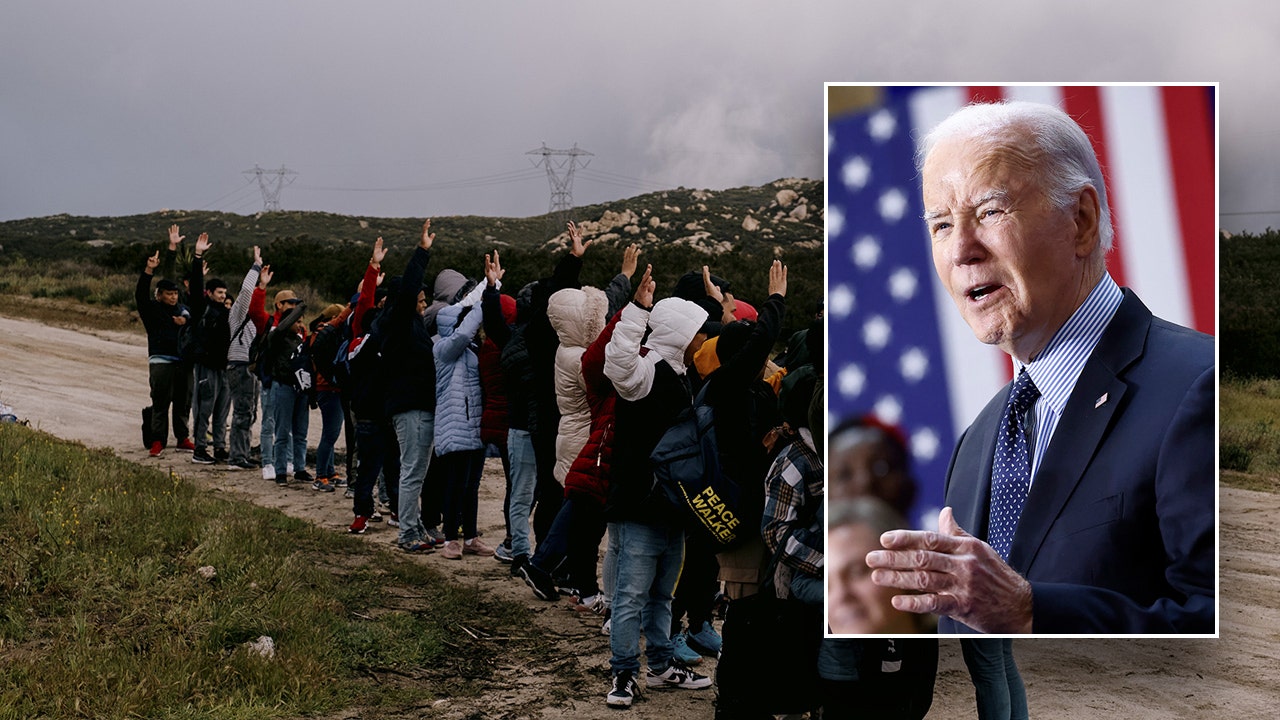
 Politics1 week ago
Politics1 week agoGOP states sue to stop Biden admin extending Obamacare to illegal immigrants
-
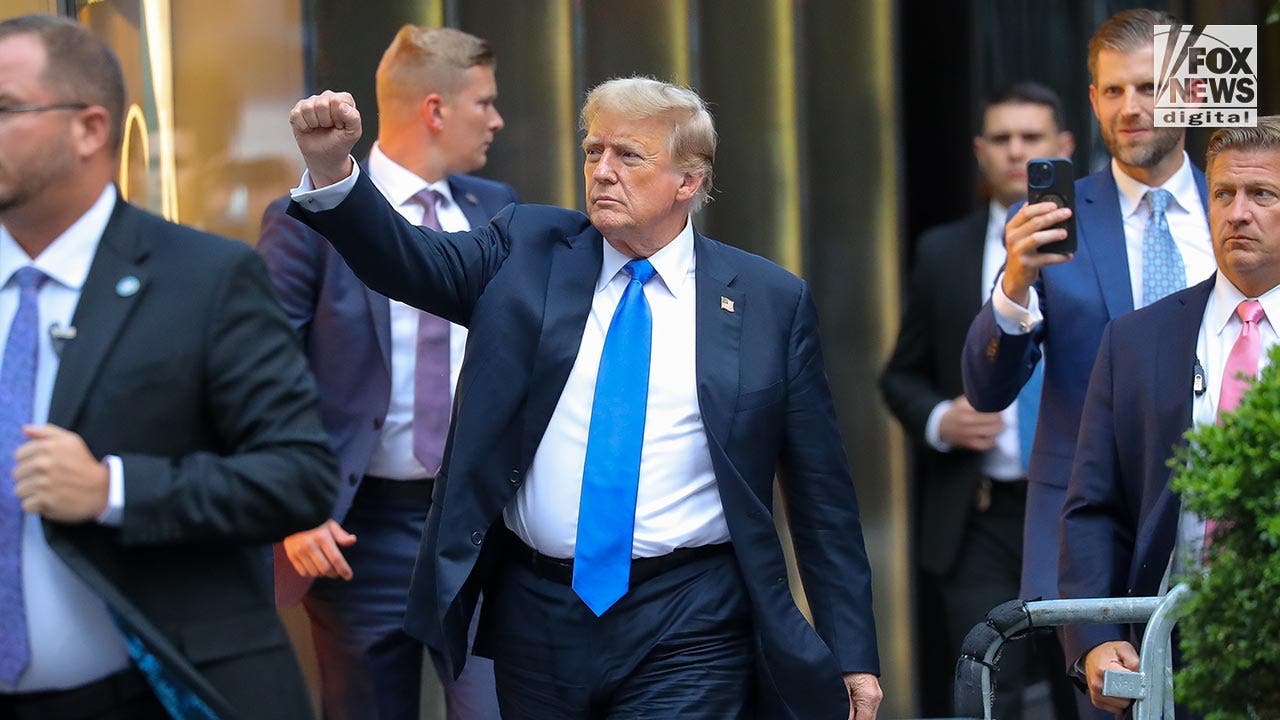
 Politics1 week ago
Politics1 week agoTrump legal cases in limbo after SCOTUS immunity ruling, freeing up schedule to campaign
-

 News1 week ago
News1 week agoPhotos: Family of Michael Brown Jr. marches on Ferguson 10 years later
-

 News1 week ago
News1 week agoCross-Tabs: August 2024 Times/Siena Poll of the Likely Electorate
-
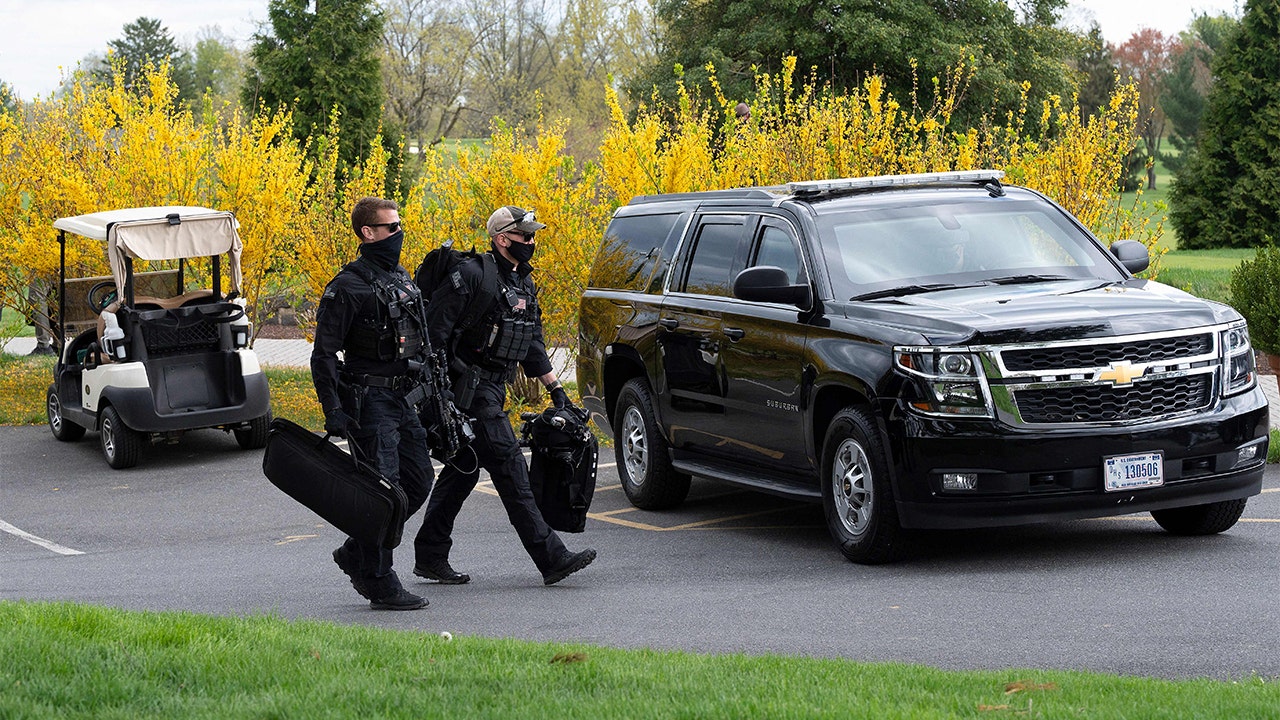
 Politics1 week ago
Politics1 week agoSecret Service apologizes after breaking into Massachusetts salon to use bathroom before Harris fundraiser


:max_bytes(150000):strip_icc():focal(749x0:751x2)/BEACH-HOUSE-FLOATS-AWAY900-08192024-d9196ec0ee304e3aa8b023338a065580.jpg)

